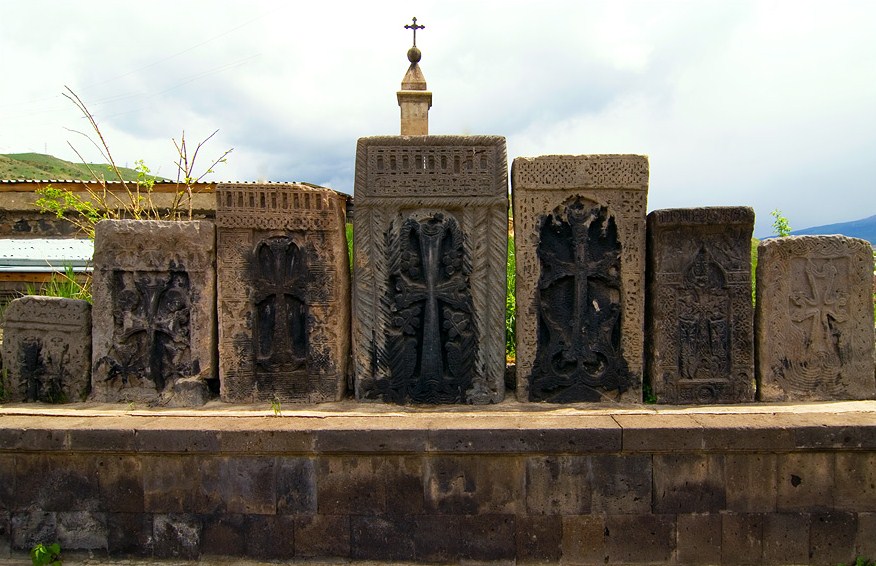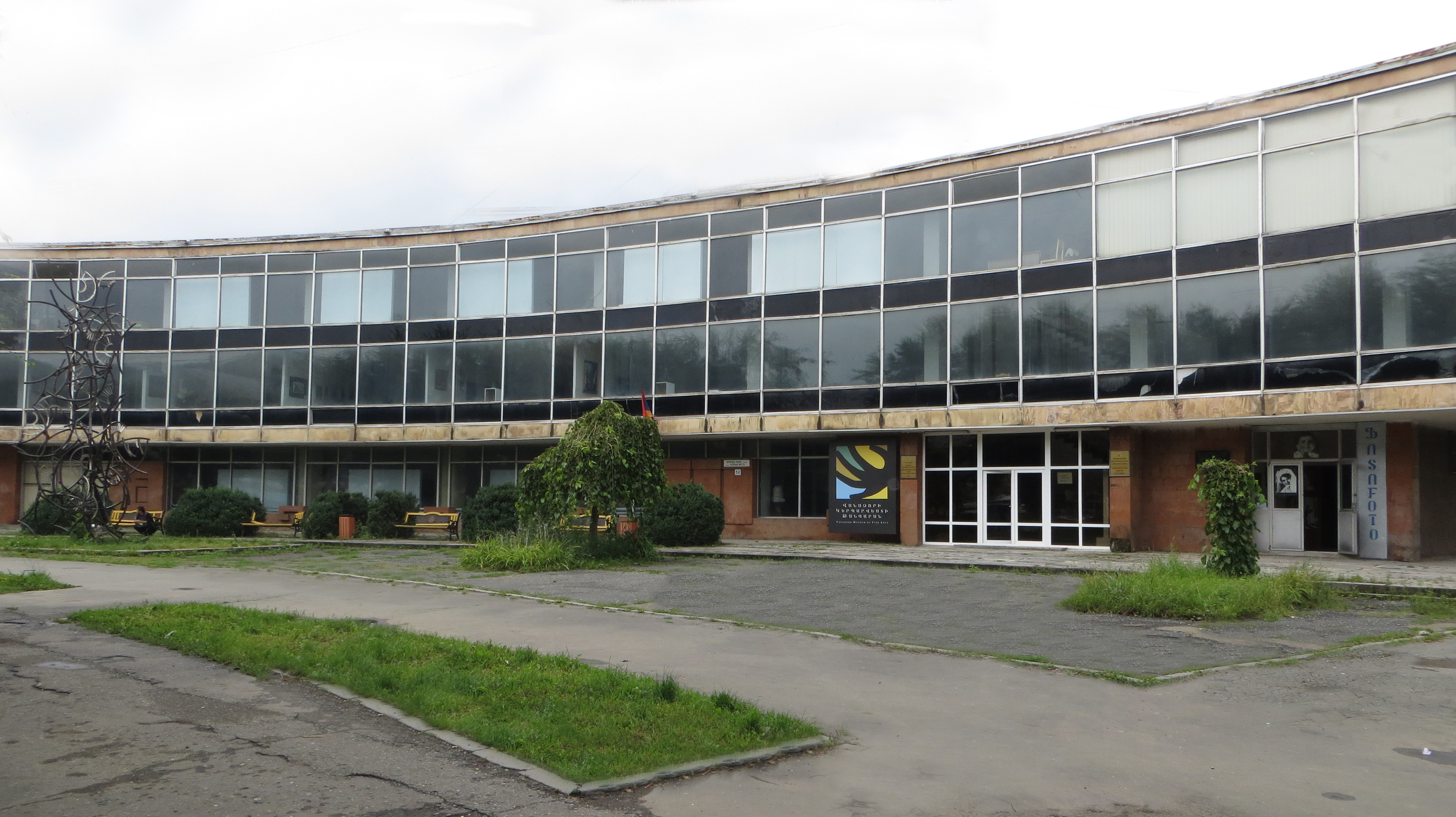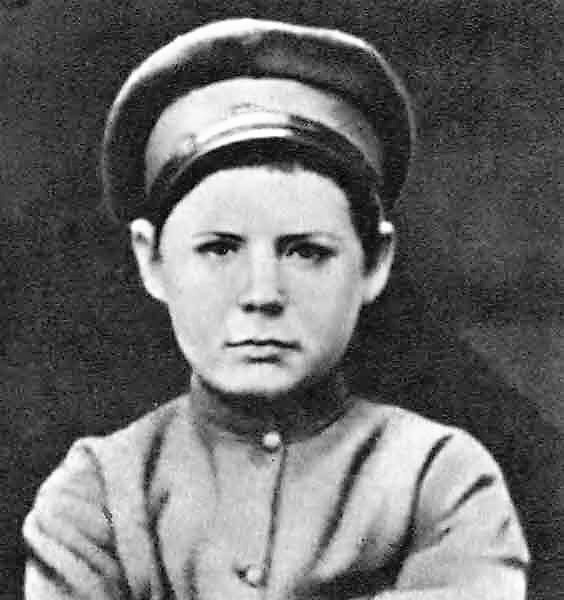|
Vanadzor
Vanadzor ( hy, Վանաձոր) is an urban municipal community and the third-largest city in Armenia, serving as the capital of Lori Province in the northern part of the country. It is located about north of the capital Yerevan. As of the 2011 census, the city had a population of 86,199, down from 148,876 reported at the 1979 official census. Currently, the town has a population of approximately 76,200. Vanadzor is the seat of the Diocese of Gougark of the Armenian Apostolic Church. Etymology Vanadzor was previously known as ''Gharakilisa'' (), meaning "black church" in Turkic. In the official records of the Russian Empire, the city was labelled as ''Karakilis Bolshoye'' (). Following the Sovietization of Armenia, the city was renamed ''Martunashen'' (, alternatively ''Martunakan'') in 1926 after Armenian Bolshevik revolutionary Alexander Miasnikian. On 3 January 1935, it was renamed ''Kirovakan'' (), after the popular Russian Bolshevik leader Sergey Kirov. A close associate of ... [...More Info...] [...Related Items...] OR: [Wikipedia] [Google] [Baidu] |
Lori Province
Lori ( hy, Լոռի, ), is a province ('' marz'') of Armenia. It is located in the north of the country, bordering Georgia. Vanadzor is the capital and largest city of the province. Other important towns include Stepanavan, Alaverdi, and Spitak. It is home to the UNESCO World Heritage Sites of Haghpat and Sanahin monasteries and the well-preserved Akhtala monastery, where Armenians, Georgians, and Greeks make an annual pilgrimage on September 20–21. The province was heavily damaged during the 1988 Armenian earthquake. The province is served by the Stepanavan Airport. Etymology The name Lori (Լոռի) is of Armenian origin (from Armenian "quail"), first appeared in the 11th century when King David I Anhoghin founded the fortified city of Lori. The fortress-city became the capital of the Kingdom of Tashir-Dzoraget in 1065. The name Lori later spread through the region and replaced the original name of Tashir. Geography Situated at the north of modern-day Armen ... [...More Info...] [...Related Items...] OR: [Wikipedia] [Google] [Baidu] |
Vanadzor Fine Arts Museum
The Vanadzor Fine Arts Museum ( arm. ՎանաձորիԿերպարվեստի թանգարան) was founded in 1974 as a branch of the National Gallery of Armenia. Five years later, in 1979, museum authority transferred to the Kirovakan City Council (today's Vanadzor Community Council), and in 2004 it was included in the Republic of Armenia's Historical and Cultural Monuments of Lori ''marz'' (province). Museum collection More than 1,700 works of art are exhibited in three public exhibition floors of the Vanadzor Museum of Fine Arts. The Museum exhibits Armenian fine art of the mid-20th century, particularly paintings, drawings, sculptures, and decorative arts, including works by Nikolay Nikoghosyan, Hakob Hakobyans, Armine Kalents, Grigor Khanjyan, Mariam and Eranuhi Aslamazyan, Mher Abeghyans, Artashes Hovsepyan and others. The collection allows visitors to follow chronological trends of development of the Armenian painting school and modern Armenian art Armeni ... [...More Info...] [...Related Items...] OR: [Wikipedia] [Google] [Baidu] |
Hayk Square
Hayk Square ( hy, Հայքի Հրապարակ ''Hayki Hraparak''), is the large central town square in Vanadzor, Armenia. It is intersected by the Tigran Mets Avenue from the southeast the northwest, and the Movses Khorenatsi Street from the northeast. The square was opened during the 1950s, based on the original plan designed by architects Baghdasar Arzoumanian and Hovhannes Margarian. During the Soviet period, the square was known as ''Kirov Square'' ( hy, Կիրովի Հրապարակ), named after the Bolshevik leader Sergey Kirov. Kirov's statue was standing at the centre of the square until the independence of Armenia. It is envisaged to erect the statues of Hayk Nahapet and Tigranes the Great at the square. Description Hayk square is decorated with several fountains at its central part. It is surrounded with notable buildings: *The Lori Province Lori ( hy, Լոռի, ), is a province ('' marz'') of Armenia. It is located in the north of the country, bordering Georgia. ... [...More Info...] [...Related Items...] OR: [Wikipedia] [Google] [Baidu] |
Church Of The Holy Mother Of God, Vanadzor
Church of the Holy Mother of God ( hy, Սուրբ Աստվածածին եկեղեցի), is a 19th-century church in Vanadzor, Armenia. It was constructed between 1828 and 1830 and consecrated in 1831. The construction was completed through the donation of Yuzbashi (captain) Piluman Tayiryants, during the reign of tsar Nicholas I of Russia and Catholicos John VIII of Armenia. History As early as the 13th century, the area of modern-day Vanadzor was called ''Gharakilisa'' -meaning the ''black church'' in Turkic- by the Seljuks possibly. This name was derived from the black-stoned ancient Armenian church of the Holy Mother of God, probably built in the 13th century during the rule of the Zakarid princes of Armenia. However, the current building of the church was built between 1828 and 1830 to replace the ancient church ruined during the 1826 Gharakilisa earthquake. The new church was built with orange and black colored tufa stones brought from Gyumri. It represents a single-nave do ... [...More Info...] [...Related Items...] OR: [Wikipedia] [Google] [Baidu] |
Diocese Of Gougark
The Diocese of Gougark ( hy, Գուգարաց թեմ ''Gougarats t'em''), is a diocese of the Armenian Apostolic Church encompassing the northern Lori Province of Armenia. It is named after the historic province of Gugark; the 13th province of the Kingdom of Armenia. The modern-day province of Lori was one of the cantons of historic Gugark. The diocesan headquarters are located in the city of Vanadzor. The seat of the bishop is the Saint Gregory of Narek Cathedral. Until December 2010, the churches of Tavush Province were under the jurisdiction of the Diocese of Gougark, when the new Diocese of Tavush was founded by Catholicos Karekin II. The Diocese includes 29 working churches with 14 full-time priests. History During the times of Soviet rule, the region of Lori was included within the Shirak Diocese. The St. Mary (Holy Mother of God) Church of Vanadzor and St. Sarkis Church of Stepanavan were both operating at that time. At the end of the 20th century with the independence ... [...More Info...] [...Related Items...] OR: [Wikipedia] [Google] [Baidu] |
Vanadzor River
Vanadzor ( Armenian: ), is a river in Lori Province, Northern Armenia. It is long, and discharges into the Tandzut (a tributary of the Pambak) in the town of Vanadzor Vanadzor ( hy, Վանաձոր) is an urban municipal community and the third-largest city in Armenia, serving as the capital of Lori Province in the northern part of the country. It is located about north of the capital Yerevan. As of the 2011 cen .... References Rivers of Armenia {{Armenia-river-stub ... [...More Info...] [...Related Items...] OR: [Wikipedia] [Google] [Baidu] |
Armenia
Armenia (), , group=pron officially the Republic of Armenia,, is a landlocked country in the Armenian Highlands of Western Asia.The UNbr>classification of world regions places Armenia in Western Asia; the CIA World Factbook , , and ''Oxford Reference Online'' also place Armenia in Asia. It is a part of the Caucasus region; and is bordered by Turkey to the west, Georgia to the north, the Lachin corridor (under a Russian peacekeeping force) and Azerbaijan to the east, and Iran and the Azerbaijani exclave of Nakhchivan to the south. Yerevan is the capital, largest city and the financial center. Armenia is a unitary, multi-party, democratic nation-state with an ancient cultural heritage. The first Armenian state of Urartu was established in 860 BC, and by the 6th century BC it was replaced by the Satrapy of Armenia. The Kingdom of Armenia reached its height under Tigranes the Great in the 1st century BC and in the year 301 became the first state in the world to a ... [...More Info...] [...Related Items...] OR: [Wikipedia] [Google] [Baidu] |
Sergey Kirov
Sergei Mironovich Kirov ( né Kostrikov; 27 March 1886 – 1 December 1934) was a Soviet politician and Bolshevik revolutionary whose assassination led to the first Great Purge. Kirov was an early revolutionary in the Russian Empire and member of the Bolshevik faction of the Russian Social Democratic Labour Party. Kirov became an Old Bolshevik and personal friend to Joseph Stalin, rising through the Communist Party of the Soviet Union ranks to become head of the party in Leningrad and a member of the Politburo. On 1 December 1934, Kirov was shot and killed by Leonid Nikolaev at his offices in the Smolny Institute for unknown reasons; Nikolaev and several suspected accomplices were convicted in a show trial and executed less than 30 days later. Kirov's death was later used as a pretext for Stalin's escalation of political repression in the Soviet Union and the events of the Great Purge, with complicity as a common charge for the condemned in the Moscow Trials. Kirov's ... [...More Info...] [...Related Items...] OR: [Wikipedia] [Google] [Baidu] |
Bagratuni Dynasty
The Bagratuni or Bagratid dynasty ( hy, Բագրատունի, ) was an Armenian royal dynasty which ruled the medieval Kingdom of Armenia from c. 885 until 1045. Originating as vassals of the Kingdom of Armenia of antiquity, they rose to become the most prominent Armenian noble family during the period of Arab rule in Armenia, eventually establishing their own independent kingdom. Their domain included regions of Armenia such as Shirak, Bagrevand, Kogovit, Syunik, Lori, Vaspurakan, Vanand and Taron. Many historians, such as Cyril Toumanoff, Nicholas Adontz and Ronald Suny, consider them to be the progenitors of the Georgian royal Bagrationi dynasty. Early history The name "Bagratuni" derives from ''Bagarat'', a Parthian variant of the Old Iranian name ''Bagadata'' ("God-given"). Historian Cyril Toumanoff speculated that a general of King Tigranes II of Armenia () named Bagadates may have been the earliest known member of the Bagratuni family, which first emerged as ... [...More Info...] [...Related Items...] OR: [Wikipedia] [Google] [Baidu] |
Kingdom Of Tashir-Dzoraget
The Kingdom of Tashir-Dzoraget ( hy, Տաշիր-Ձորագետի Թագավորություն ''Tashir-Dzorageti t'agavorut'yun''), alternatively known as the Kingdom of Lori or Kiurikian Kingdom by later historians, was a medieval Armenian kingdom formed in the year 979 by the Kiurikian dynasty, a branch of the Bagratuni dynasty, as a vassal kingdom of the Bagratid Kingdom of Armenia. The first capital of the kingdom was Matsnaberd, currently part of modern-day Azerbaijan. It was located on the territories of modern-day northern Armenia, northwestern Azerbaijan and southern Georgia. The founder of the kingdom and the Kiurikian dynasty was king Kiurike I (also known as Gurgen I). In 979 King Smbat II of Armenia granted the province of Tashir to his brother Kiurike with the title of king. The branch went on to outlive the main one in Ani. It became especially strong during the reign of King David I Anhoghin who succeeded his father Kiurike and ruled between 989 and 1048. ... [...More Info...] [...Related Items...] OR: [Wikipedia] [Google] [Baidu] |
Seljuk Dynasty
The Seljuk dynasty, or Seljukids ( ; fa, سلجوقیان ''Saljuqian'', alternatively spelled as Seljuqs or Saljuqs), also known as Seljuk Turks, Seljuk Turkomans "The defeat in August 1071 of the Byzantine emperor Romanos Diogenes by the Turkomans at the battle of Malazgirt (Manzikert) is taken as a turning point in the history of Anatolia and the Byzantine Empire. or the Saljuqids, was an Oghuz Turkic, Sunni Muslim dynasty that gradually became Persianate and contributed to the Turco-Persian tradition in the medieval Middle East and Central Asia. The Seljuks established the Seljuk Empire (1037-1194), the Sultanate of Kermân (1041-1186) and the Sultanate of Rum (1074-1308), which at their heights stretched from Iran to Anatolia, and were the prime targets of the First Crusade. Early history The Seljuks originated from the Kinik branch of the Oghuz Turks, who in the 8th century lived on the periphery of the Muslim world, north of the Caspian Sea and Aral Sea in their ... [...More Info...] [...Related Items...] OR: [Wikipedia] [Google] [Baidu] |
Kingdom Of Armenia (antiquity)
The Kingdom of Armenia, also the Kingdom of Greater Armenia, or simply Greater Armenia ( hy, Մեծ Հայք '; la, Armenia Maior), sometimes referred to as the Armenian Empire, was a monarchy in the Ancient Near East which existed from 331 BC to 428 AD. Its history is divided into the successive reigns of three royal dynasties: Orontid (331 BC–200 BC), Artaxiad (189 BC–12 AD) and Arsacid (52–428). The root of the kingdom lies in one of the satrapies of the Achaemenid Empire of Persia called Armenia (Satrapy of Armenia), which was formed from the territory of the Kingdom of Ararat (860 BC–590 BC) after it was conquered by the Median Empire in 590 BC. The satrapy became a kingdom in 321 BC during the reign of the Orontid dynasty after the conquest of Persia by Alexander the Great, which was then incorporated as one of the Hellenistic kingdoms of the Seleucid Empire. Under the Seleucid Empire (312–63 BC), the Armenian throne was divided in two—Armenia Maio ... [...More Info...] [...Related Items...] OR: [Wikipedia] [Google] [Baidu] |






.png)